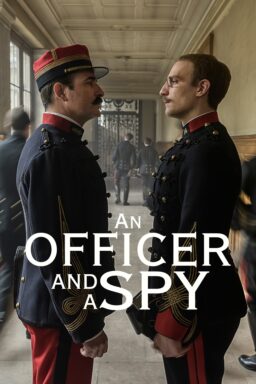The “2015 Leonard Maltin’s Movie Guide,” all 1,632 pages of it, just out in paperback (click here to buy it), is the 45th, and final, edition of this iconic compendium. To movie lovers of a certain age, especially, the prospect of a “Guide”-less cinematic landscape is of a piece with the demise of 35mm or the shuttering of your local movie house. Which is to say, the end of an era. For a new generation, for whom the Internet has become the resource of choice for information about movies (and increasingly, the movies themselves), the Joni Mitchell lyric applies: “You don’t know what you’ve got ‘til it’s gone.”
First published in 1969 (it became an annual in 1986), the “Guide” was a godsend to budding cineastes in an era where movies and information about them were not so accessible. There were only three major broadcast networks. There was no cable, no Internet, no home video. Growing up in Chicago, my increasingly dog-eared copy of the “Guide” was my trusted encyclopedic source to determine which movies shown on “Family Classics,” “Creature Features” or “When Movies were Movies” I should be sure to see.
The first edition, then titled “TV Movies,” had 8,000 entries; concise capsule reviews, rated from four stars to BOMB. The new edition boasts 16,000. One edition of the “Guide” contained a seam-busting 17,000 entries.
Patton Oswalt, whose own ode to the movies that informed his life, “Silver Screen Fiend,” will be published Jan. 6, 2015, in an email, called the “Guide,” “A paperback Kubrickian monolith of one man’s massive and far-reaching tastes.”
In a conversation with Roger Ebert.com, Maltin reflected on the life and legacy of the “Guide.” He got a kick out of Oswalt’s quote, especially the “Kubrickian” part.
The origin story. “It’s not as interesting as Bruce Wayne’s,” Maltin said. But it kinda is.
Maltin, a Teaneck, NJ. high school senior in 1968, published Film Fan Monthly, a fanzine for vintage movie buffs. “If you wanted to express yourself and had a creative bent and some ambition you started a fanzine,” he said. “Today, it would be a blog or website.” A teacher had a friend who was an editor at Signet Books and thought the two would hit it off. She gave Maltin his number and encouraged him to call. “So I did, of course, not knowing where this might lead,” Maltin said.
At the appointment, the ice was broken when the editor noticed the copies of Film Fan Monthly Maltin brought to the interview. Turned out he was a subscriber. Turned out, too, that he wanted to publish a rival book to Steven Scheuer’s “Movies on TV,” a paperback guide to movies shown on television and at the time the only book of its kind. He asked Maltin if he liked Scheuer’s book, and he, “with the cockiness of youth,” responded, “Yeah, as far as it goes.” Maltin went on to list where the book could be improved (more cast names, a director credit, the film’s original run time, and whether it was in black and white, “which made more of a difference 45 years ago,” Maltin laughed). The editor offered Maltin the job. “It’s fair to say I was dumbfounded,” he said. “Before I knew it, a contract was being drawn up. And then we set to work.”
“It’s never been a one-person operation, not from the start.”
The first “Guide” was essentially written by Maltin, a New York man who had a film research office, and his colleague, a woman who knew other film buffs. “He had all the reference books,” Maltin said. “We, essentially, were it. We did the best we could is all I can tell you.”
“All I saw were its flaws and shortcomings”
When the first “Guide” was published, Maltin cringed. “I had the experience other authors will recognize; you proofread something and then as soon as it’s in print, mistakes leap off the page in neon,” he said. “I was very dissatisfied, and it was five years before we did another edition. I made it my goal to improve it. That’s what I’ve been trying to do over the last 40 years, constantly improve on it.
Access makes the “Guide” grow stronger
Today, film buffs can pretty much see what they want when they want it. What’s missing, Maltin said, is “the thrill of discovery. “You had to chase (the movies) down,” he enthused. “When I was in junior high and high school, every now and then if there was something really rare on the late late show, I would force myself to go to sleep early, set the alarm for 1:15 a.m. watch the movie on TV, keeping the volume down so as not to wake anyone in the house, go back to sleep and wake up to go to school the next day. It was an extreme measure, but it was the only way I was going to see these movies. But I was also lucky. I lived just outside New York City, and Manhattan had many revival theatres and the Museum of Modern Art. So I had more opportunities than most to do my basic training on film history. I took pretty copious notes (on all the movies I saw) and they came in handy when the “Guide” assignment came along.”
The “Guide” for the harried fan
Once Maltin and his growing roster of contributors (including former USA TODAY critic Mike Clark, Pete Hammond of Deadline.com and Joe Leydon of Variety) tracked them down, the “Guide” became the most trusted treasure map for cinephiles. Patton Oswalt, in his email, said “Leonard Maltin’s ‘Guide’ was the object I saw most often clutched in the hands of the film freaks in the revival cinemas I visited all through the 90’s. A dog-eared, much-scribbled-in life raft of cinema.”
“We’ve had discrepancies whether there is a hyphen in your name”
Maltin’s aims for the “Guide” were pragmatic. “It was designed for dedicated viewers who watched a lot of movies on TV,” he said. “We wanted to provide more information than they could get from the local newspaper listings or TV Guide. That’s all. I never dreamed it would be adopted by industry professionals.”
The key to the “Guide’s” growth and enduring success was commitment to accuracy. In the “Guide’s” infancy, it could be grueling just to get a film’s correct run time or accurate cast list, Maltin said. He laughs at the memory of approaching Daniel Day-Lewis at a film critic luncheon to ask whether there was a hyphen in his name. “He said, ‘I’m happy to set the record straight; there is,’” Maltin recalled. “I said, ‘Thank you. Now I have it from the source.’”
Maltin also gives credit to sharp-eyed moviegoers. “As the book became more successful, we would hear from our readers any time we goofed. It could be something as small as saying a film is set in 1910 and it was really 1915. When the book became an annual, it gave me enormous satisfaction to know that as frustrating as it was to have committed an error or an error of omission, that we could fix it the next year and make the book better.
“There are films that are hard to quantify because people have an almost irrational affection.”
Of the tens of thousands of reviews that comprise the “Guide,” Maltin reckons he has gotten the most flack over “Taxi Driver” (two stars) and “Blade Runner” (1½-stars). In the case of “Taxi Driver,” he did go back years later and allow that the film was “‘undeniably influential’ to reflect that it was my aberrant opinion,” he said. But for the most part, the reviews stand. “I don’t have a lot of time to revisit old movies,” he said. “I’m too busy watching new ones. But the most dramatic example I can give is ‘Alien.’ I’m a wimp, and when it first came out, it scared the hell out of me. I found it too upsetting so I gave it a review that reflected that. Twenty-five years later, Ridley Scott tweaked it and reissued it theatrically. When I saw it again, I thought it was masterful and I completely changed the review to three-and-a-half stars.”
The “Guide” has also never been swayed by a film’s cult status. Thus, two stars for “Caddyshack” (“People love it, I know, I know”) and two-and-a-half for “The Big Lebowski” (“which I was never crazy about”). But he takes pride in being listed in the Guinness Book of World Records for writing the shortest movie review. A reader submitted Maltin’s take on the 1948 film, “Isn’t it Romantic.” Maltin’s review, in full: “No.”
“It’s only my opinion.”
“People would stop me in the street at airports in hotel lobbies,” Maltin said. “I’ve had people say to me they use the ‘Guide’ only for the factual information and I’ve had people say they rely on my opinion, especially if they are deciding whether to stay up late to watch a movie on cable. I promise you this is true: Years ago, I had a guy say to me that he took my star ratings and doubled them to figure out whether he would like a movie. The same week, someone else said he took my ratings and cut them in half.”
And now, a plug for the final edition
It will contain 300 new entries, many revisions and updates, Maltin said. “Every year we note when a film has been remade, has had a sequel, or been adapted for television or a Broadway play. We add (now famous) actors to the credits of films for which we didn’t have them listed. We’ve added eight or nine credits for June Squibb (an Oscar-nominee for “Nebraska”). She was in Martin Scorsese’s ‘The Age of Innocence’ 21 years ago, but we hadn’t taken note of her until now.” One special feature will be a list of 60 breakthrough performances.
And that’s not all, folks.
Maltin is preparing a new edition for publication next year of his “Classic Movie Guide,” which spans the silent era to 1965. “When we did our first edition, we added 1,200 movies we had never before covered,” he said. “When we did the second edition (in 2010) we added several hundred more. We’ll do the same next year. Films keep getting unearthed, restored and released. We’ll never run out of material.”
Maltin can also be seen on the Reelz cable network and he is preparing his library of film history books for Amazon Kindle.
Patton Oswalt gets the penultimate words
“I still can’t believe he only gave ‘Taxi Driver’ 2 stars….”
“The greatest satisfaction”
“It became apparent a couple of years ago that this was where things were headed,” Maltin reflected. “The Internet is not my enemy. I use the Internet all the time like everybody else. But a younger generation has come to believe that everything should be available to them online and on their iPhones and that it should all be free. Midway through (working on the 2015 edition), I knew this would be the last ‘Guide,’ which was kind of a shock at that moment because I have spent my entire adult life doing this. The ‘Guide’s’ success was an enormous satisfaction and the success accelerated when I got on television (as “Entertainment Tonight’s” first and only film critic) and simultaneous to that home video’s (heyday) in the 1980s. That was a lovely confluence of events. But the greatest satisfaction is leading people to good movies they might not have otherwise seen. When people tell me that they decided to give a movie a try because of reading my review, that is enormously satisfying. Any critic would say the same. We’ve had an incredible 45 year run that I could never have dreamt of or anticipated. I am profoundly grateful to all our readers, our loyal readers.”












